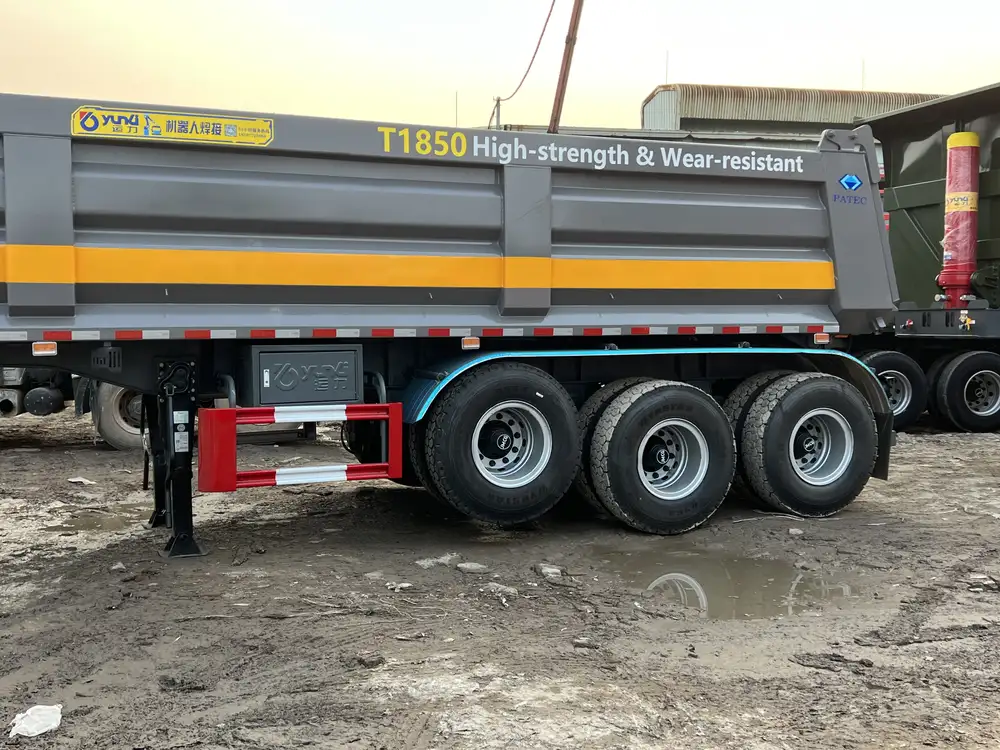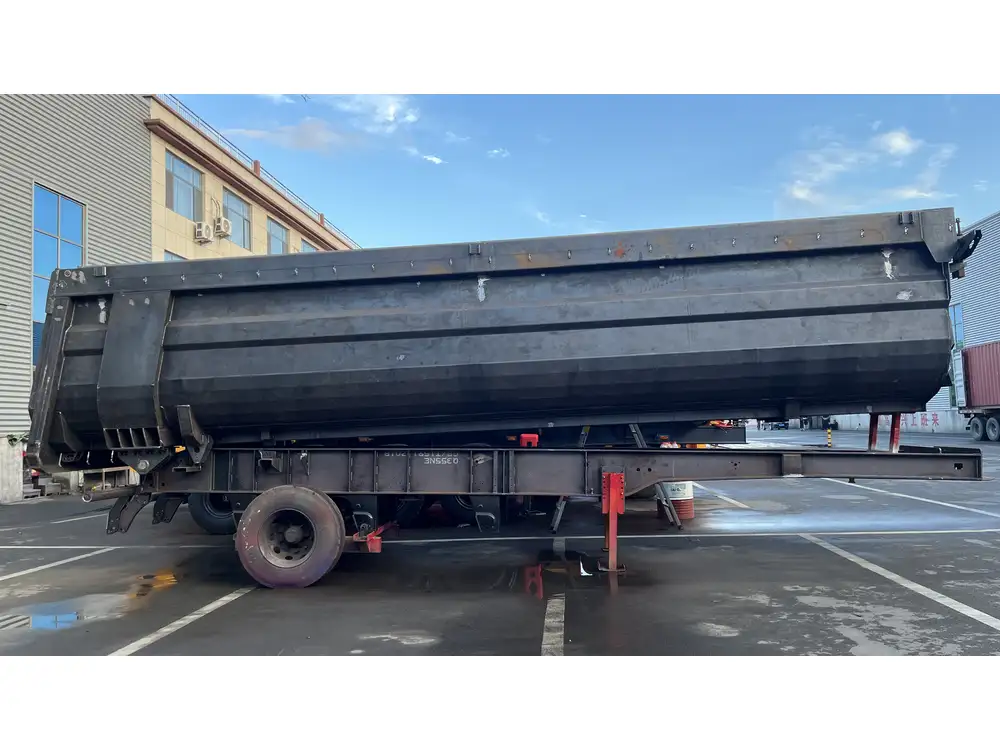When it comes to transporting bulk materials, dump trailers are a popular choice. Whether you’re involved in construction, landscaping, or any other industry that requires hauling materials, understanding the capacity of your dump trailer is crucial. In this article, we will delve deep into how many cubic yards fit into a dump trailer, helping you make informed decisions about your hauling needs.
What Is a Dump Trailer?
A dump trailer is a specialized trailer designed for transporting loose materials. It features a hydraulic lift system that allows the trailer bed to tilt, facilitating the easy unloading of contents. These trailers come in various sizes and configurations, making them versatile for a range of hauling applications.
Types of Dump Trailers
Before we analyze capacity, it’s essential to understand the different types of dump trailers available, as this can influence how many cubic yards they can hold:
- Standard Dump Trailers: These are the most common and typically range in capacity from 5 to 20 cubic yards.
- Gooseneck Dump Trailers: Offering increased stability and capacity, gooseneck trailers usually hold between 10 to 25 cubic yards.
- Lightweight Dump Trailers: Designed for smaller jobs, these trailers often have capacities of 3 to 7 cubic yards.
- Heavy-Duty Dump Trailers: Equipped for industrial use, these can carry up to 30 cubic yards or more, depending on the model.

Calculating the Capacity of a Dump Trailer
The capacity of a dump trailer is typically measured in cubic yards. To determine the amount of material that can fit inside, you need to know the dimensions of the trailer’s bed. The formula for calculating cubic yards is:
[ \text{Cubic Yards} = \frac{\text{Length (in feet)} \times \text{Width (in feet)} \times \text{Height (in feet)}}{27} ]Let’s break this down:
Step-by-step Calculation
- Measure the Dimensions: Use a tape measure to get the length, width, and height of your trailer’s bed, converting measurements into feet.
- Apply the Formula: Insert your values into the formula above.
- Convert to Cubic Yards: The total volume calculated is in cubic feet. To get cubic yards, divide by 27 (the number of cubic feet in a cubic yard).
Example Calculation
Consider a standard dump trailer with the following dimensions:
- Length: 10 feet
- Width: 6 feet
- Height: 2.5 feet
Using the formula:
[ \text{Cubic Yards} = \frac{10 \times 6 \times 2.5}{27} = \frac{150}{27} \approx 5.56 \, \text{cubic yards} ]In this example, the trailer can carry approximately 5.56 cubic yards of material.

Factors Affecting Capacity
Build and Construction
The type of materials used in the trailer’s construction can affect its weight capacity. A robust build may support heavier loads without compromising safety. Thus, knowing the weight distribution of the loads you plan to haul is vital.
Weight Limit
Every dump trailer has a weight limit distinct from its volumetric capacity. This limit is crucial to avoid overloads that could cause structural damage or safety issues on the road. For instance, a trailer that can hold 10 cubic yards of soil (approximately 2,700 pounds) cannot exceed its maximum weight limit, which might be lower based on the trailer’s specs.

Material Type
Different materials have varying densities. For example, a cubic yard of gravel weighs more than a cubic yard of mulch. Understanding the weight of the material you’re hauling can help better plan your load. Here’s a quick comparison of typical material weights per cubic yard:
| Material | Weight per Cubic Yard |
|---|---|
| Soil | 2,000 – 3,000 lbs |
| Gravel | 2,400 – 3,000 lbs |
| Sand | 2,600 lbs |
| Mulch | 400 – 800 lbs |
| Asphalt Millings | 1,200 – 1,600 lbs |
Practical Applications
Construction
In the construction industry, precise volume measurement is vital. When purchasing materials like concrete, knowing how much can fit in your dump trailer aids in minimizing waste and optimizing transport.

Landscaping
For landscaping plays, dump trailers are instrumental in transporting soil, mulch, stones, and plants. Knowing cubic yards helps landscapers efficiently plan their load to avoid multiple trips.
Waste Management
In waste management sectors, dump trailers facilitate efficient removal of debris, construction waste, and other materials. Understanding capacity ensures timely and economical operations.
Common Use Cases for Dump Trailers
- Land Clearing: Moving large quantities of trees, brush, and stumps.
- Site Work: Hauling building materials, excavated soil, and rocks.
- Material Transport: Delivering gravel, mulch, or sand for various projects.
- Disaster Cleanup: Removing debris quickly from affected areas.

Choosing the Right Dump Trailer
Selecting the appropriate dump trailer depends on intended use, load capacity, and the type of materials you intend to transport. Here are some factors to consider when choosing:
Purpose
Define what the trailer will be primarily used for. A standard trailer may suffice for landscaping, while a heavy-duty version is better suited for construction sites.
Size and Capacity
Assess what volume and weight you need to haul regularly. If your projects require varying loads, consider adjustable options or multi-purpose trailers that can cater to your needs.

Build Quality
Check for durability and construction materials of the trailer. Features like a reinforced frame can impact the lifespan and effectiveness of the trailer.
Hydraulic System
The efficiency of the hydraulic system is crucial for quick unloading. Investigate pump capacity and lift speed to determine the trailer’s operational efficiency.
Maintenance Tips for Longevity
Maintaining a dump trailer ensures longevity and optimal performance:
- Regular Inspections: Check for wear and tear on the frame, bed, and hydraulic components.
- Lubrication: Keep moving parts well-lubricated to avoid rust and friction.
- Tire Maintenance: Ensure tires are appropriately inflated and in good condition for safe hauling.
- Clean After Use: Remove debris and wash the trailer to prevent material build-up which can lead to rust.

Conclusion
Understanding the capacity of your dump trailer, specifically how many cubic yards fit inside, empowers you to make informed decisions that optimize your hauling process. By applying the calculations detailed above and considering the factors that impact capacity, you can maximize the efficiency and effectiveness of your operations, regardless of your industry.
In the evolving landscape of haulage and construction, knowledge translates directly into productivity and safety. Explore your options, and remember: investing in the right dump trailer now can pay dividends for years to come.



